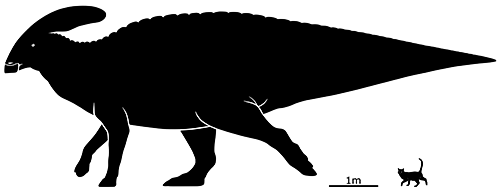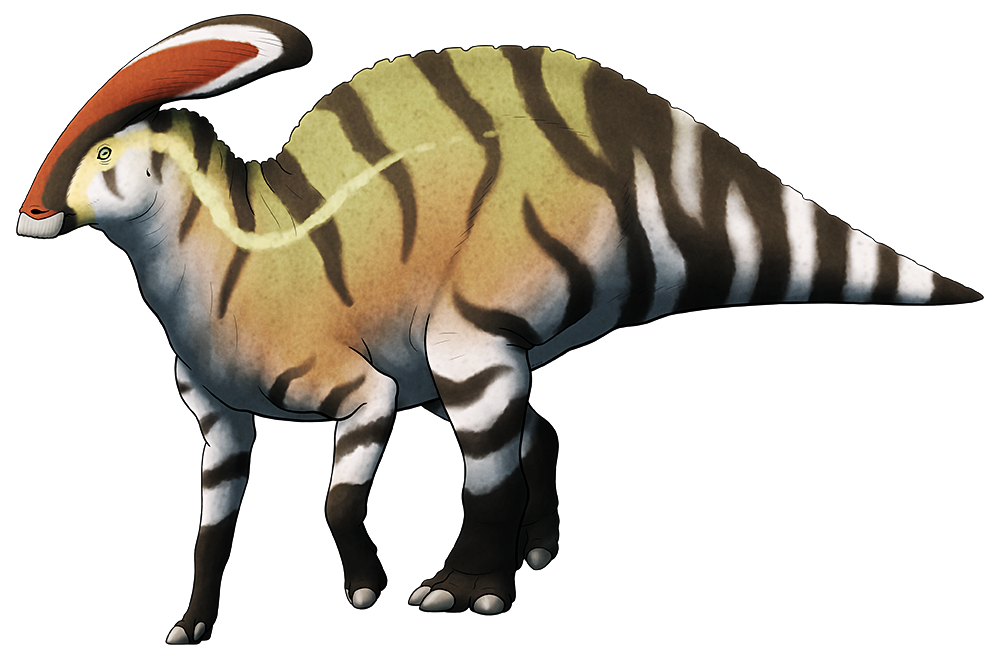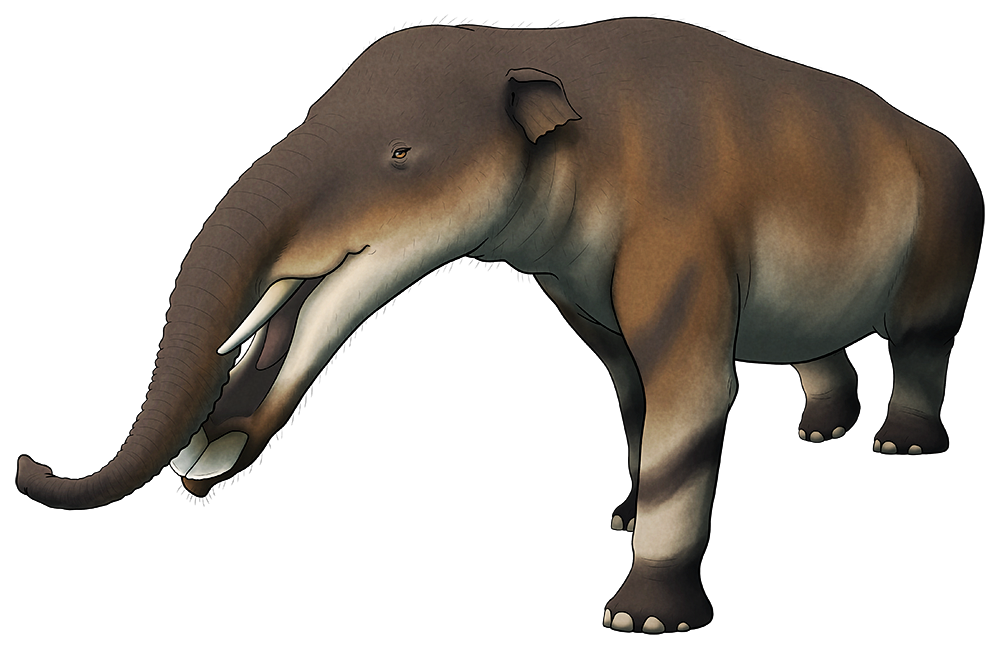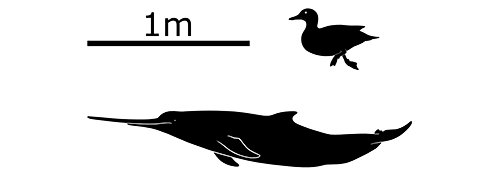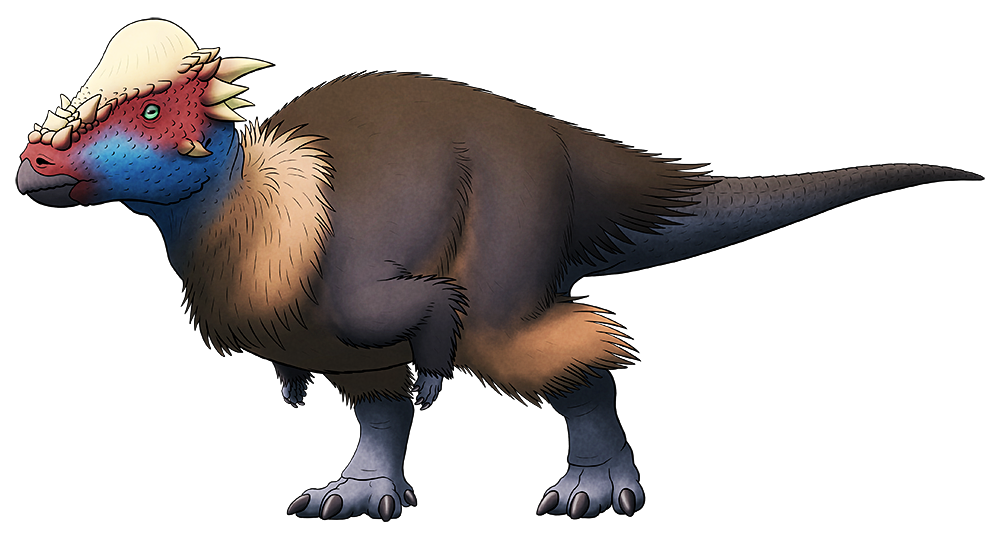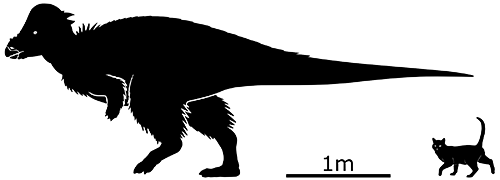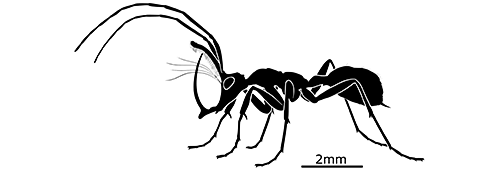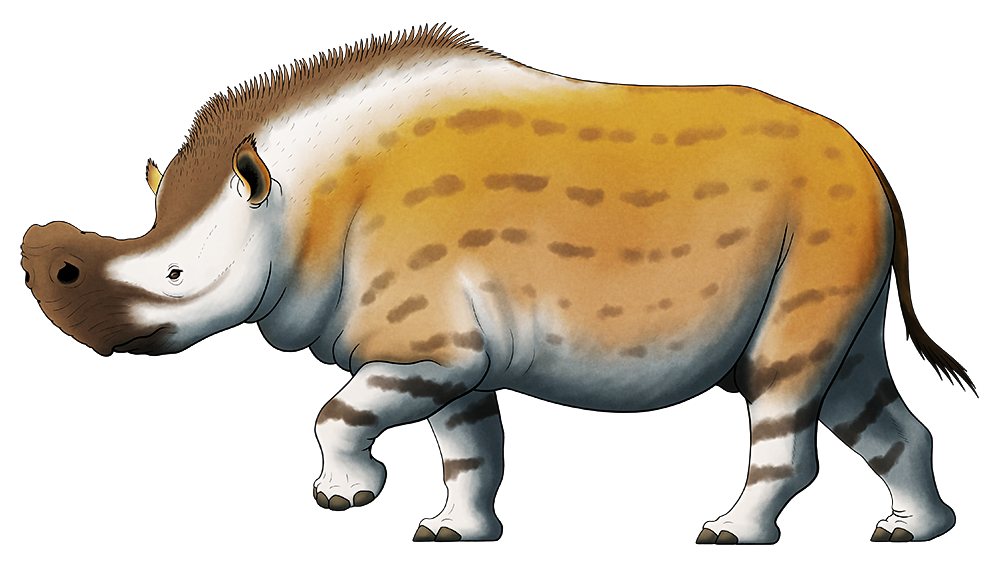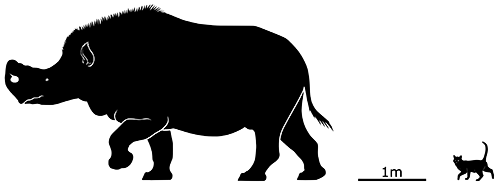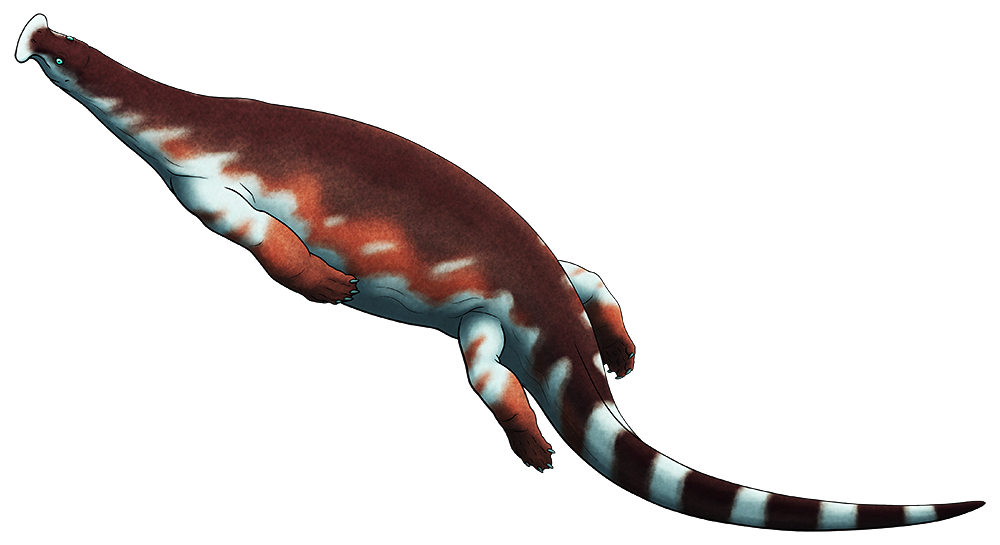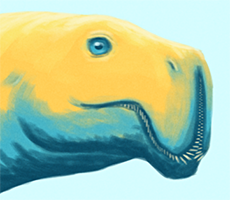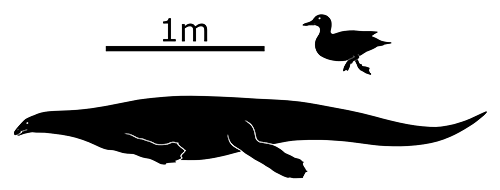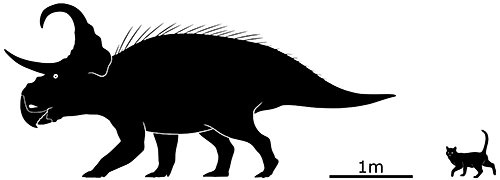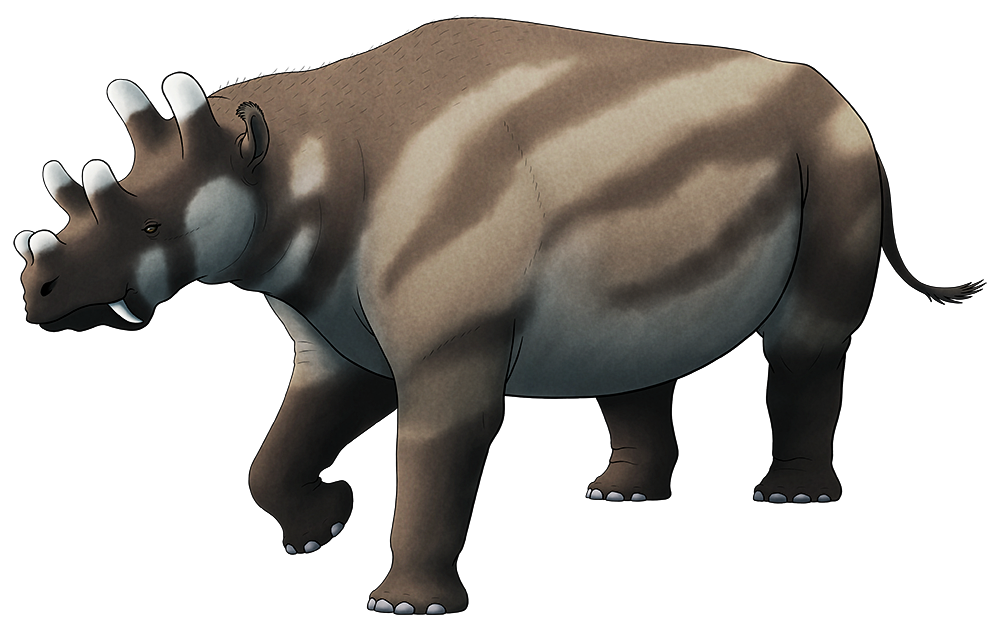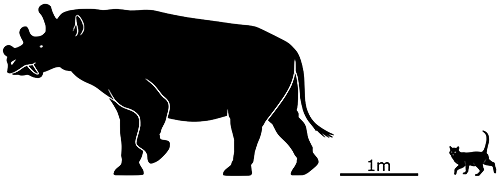The ceratopsians and pachycephalosaurs weren’t the only ornithischian dinosaurs to do weird things with their skulls.
The hadrosaurs are commonly referred to as “duck-bills” (despite how their beaks weren’t actually duck-like at all), and are famous for the elaborate crests seen on some of the group’s members, with shapes ranging from lobes to helmets to hatchets to spikes – and even some of the apparently crestless species are now known to have sported fleshy combs instead of the bony structures seen in their relatives.
But by far the most recognizable of the crested hadrosaurs is Parasaurolophus walkeri, with its long curved backwards-pointing tubular crest.
This particular species was mid-sized for the genus, growing up to around 10m long (32’10”) and is known from Western North America during the Late Cretaceous, about 76-73 million years ago.
Its crest was intermediate in size and shape between the other two known species. The larger Parasaurolophus tubicen had a longer and slightly straighter crest, while the smaller Parasaurolophus cyrtocristatus had a shorter more strongly curved one. Juveniles developed these crests as they matured, starting off with much smaller bumps on their snouts that gradually grew backwards and upwards.
Some hadrosaur crests were purely for visual display, but in the lambeosaurine lineage that Parasaurolophus belonged to they also incorporated complex looping nasal passages that were probably used as resonating chambers, allowing each species to make a unique-sounding loud bellowing call to communicate with each other.
There are also rumors of a currently-undescribed specimen of Parasaurolpphus that has preserved soft tissue around its crest, possibly a keratinous covering or skin flaps that made it appear even larger and more flamboyant in life than the underlying bone. So I’ve given this reconstruction a speculative structure like that, along with hoof-like claws on its hands similar to those recently revealed for Edmontosaurus.
